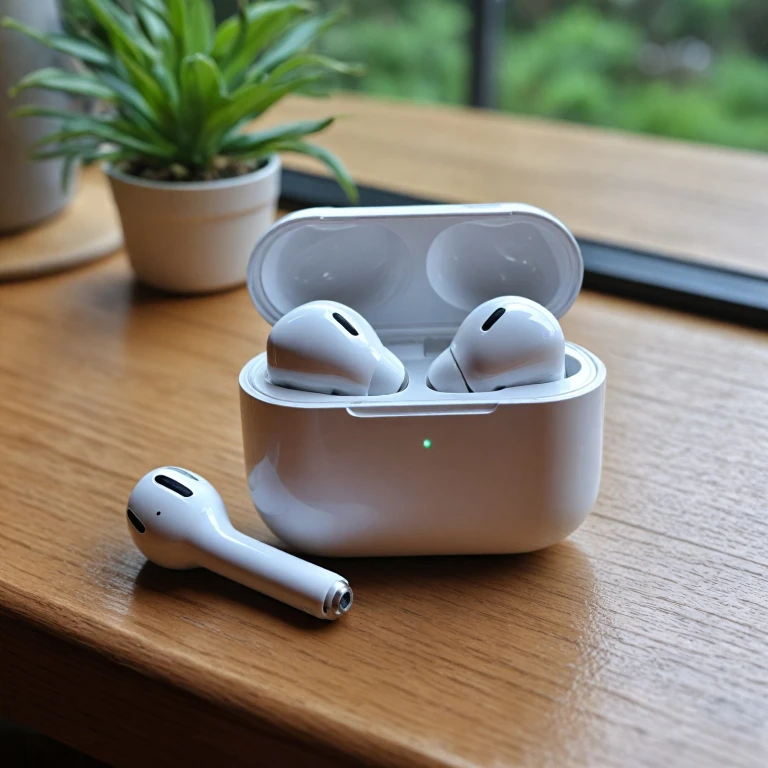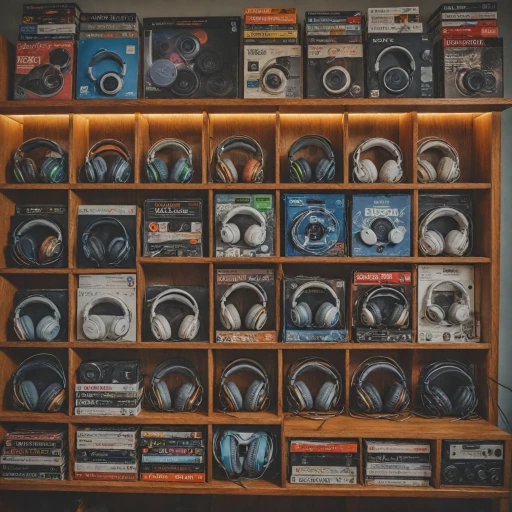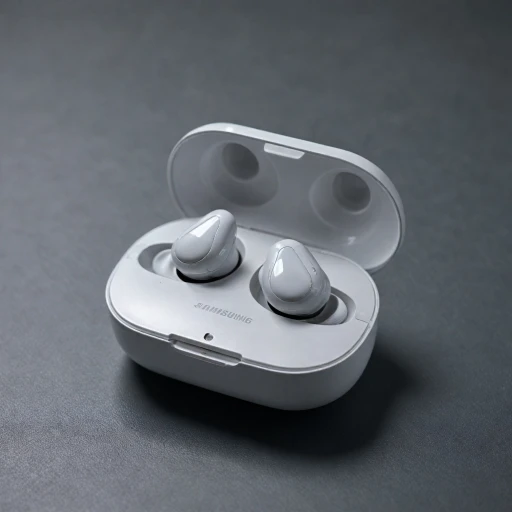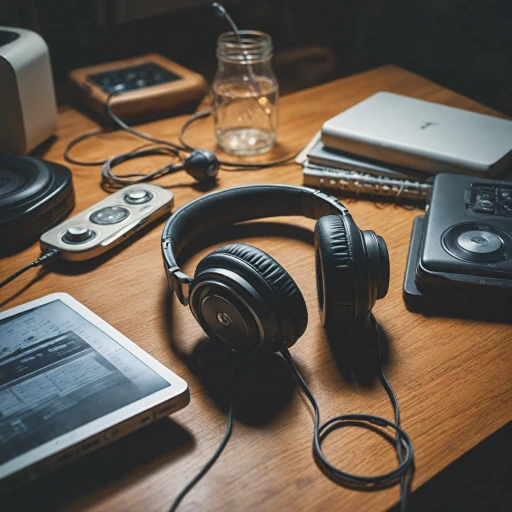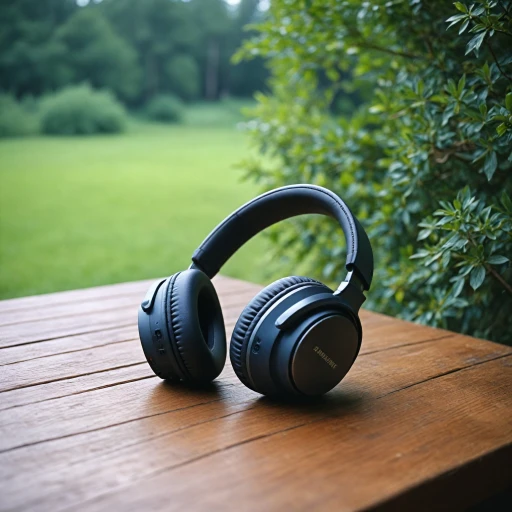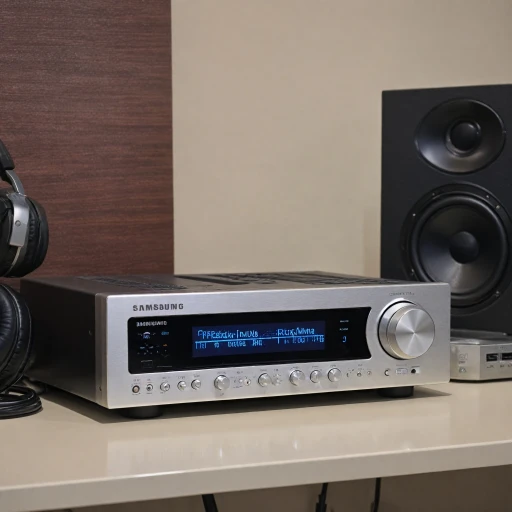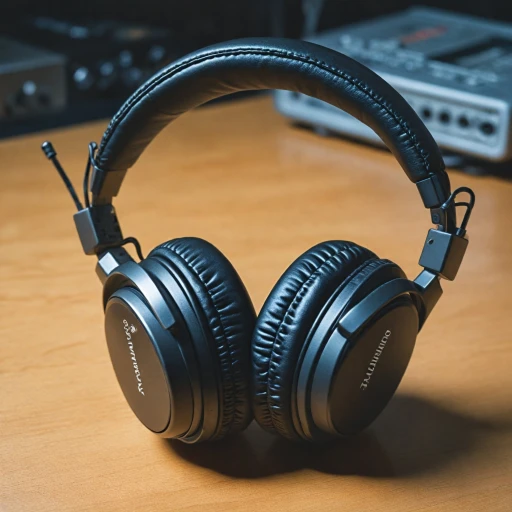
Understanding Noise Canceling Technology
Decoding the Technology Behind Noise Cancelation
Noise canceling technology in devices like the AirPods Pro is essentially a sophisticated method to drown out ambient noises, enhancing audio experiences. Whether you’re using Apple’s AirPods, AirPods Pro, or AirPods Max, the working principle remains similar, although with varying degrees of efficiency. At the heart of this technology lies active noise cancellation (ANC), which uses microphones and speakers to reduce external sounds. The AirPods Pro, for instance, come with outward-facing and inward-facing microphones. These listen to external sounds and generate anti-noise signals that cancel them out before they reach your ear. This can be particularly helpful in environments like airplanes or busy offices where constant noise can be a distraction. For anyone interested in exploring this further, consider connecting your Beats headphones to delve into more on how different devices utilize noise-canceling technology. Understanding how your device uses this technology is crucial as it affects overall performance and issues that might arise. Listening quality can be influenced by factors such as how well the ear tips fit, or if the device settings are optimally adjusted. When you notice inconsistencies in performance, it might be an indication to explore resetting options. Proper care and understanding of your AirPods' features will also contribute to their longevity and optimal function, ensuring you get the best out of your investment.Common Issues with Noise Canceling Headphones
Identifying Common Problems with Noise Cancellation
Noise canceling headphones, including popular models like AirPods Pro and AirPods Max, have revolutionized how we experience sound. However, they are not without their challenges. Here are some frequently encountered issues:
- Ineffective Noise Cancellation: Over time, the efficiency of noise cancellation can diminish, often due to software glitches or a need for a simple factory reset.
- Intermittent Connection: A common problem where the device frequently disconnects from your iPhone or iPad. Ensuring your settings align correctly and doing a reset can help resolve this.
- Battery Drain: Rapid battery consumption may indicate underlying issues with the charging case or headphones themselves. Maintaining your AirPods and checking charging habits is crucial.
- Muffled Sound: When sound quality is impacted, it might be time to clean your devices or perform a factory reset. Dust can accumulate around the speaker, diminishing sound clarity.
- Status Light Malfunctions: Particularly when the status light on the charging case flashes amber regularly. This could necessitate holding the setup button to initiate a hard reset.
These concerns are often discussed in various forums and Apple support pages. To explore a deeper understanding of the AirPods Pro features, one can identify more specific problems and solutions available. Identifying and troubleshooting these issues promptly ensures optimal performance of your AirPods Pro.
When to Consider Resetting Your AirPods Pro
Identifying the Right Time for a Reset
If you're experiencing persistent issues with your AirPods Pro, knowing when to reset can be crucial. While noise canceling technology is celebrated for its prowess, problems may arise that affect your experience. Below are some scenarios when resetting your AirPods Pro may be appropriate.
- Persistent Connectivity Issues: If your AirPods Pro regularly disconnect from your iPhone, iPad, or other devices, a reset might resolve the inconvenience.
- Inconsistent Noise Cancelation: Should you notice that the noise canceling feature isn't performing as expected, or if it's inconsistent, resetting could restore optimal functionality.
- Battery and Charging Problems: Problems with the charging case or battery life may also warrant a reset. If the status light doesn't indicate charging correctly, or if you can't seem to hold charge, a reset might help.
- Software Glitches: In cases where software updates for your AirPods Pro from Apple haven't resolved the issues, a reset can act as a factory reset, bringing them back to their original state.
Remember, while resetting AirPods Pro can fix many issues, it’s essential to consider other troubleshooting steps beforehand.
Resetting allows for a fresh start but be sure to follow the right procedures to avoid potential hiccups. If problems persist even after a reset, reaching out to Apple Support is advisable to ensure your devices function as expected. Regular maintenance also plays a supportive role in sustaining the longevity of your AirPods.
Step-by-Step Guide to Resetting AirPods Pro
Resetting Your AirPods Pro with Precision
Resetting your AirPods Pro can be beneficial for resolving various issues, from connectivity problems to unusual performance glitches. To ensure a successful reset, here's a straightforward guide to lead you through each step with ease.
Gather Necessary Items
- Ensure your AirPods Pro and charging case are fully charged.
- Have your iPhone, iPad, or compatible device nearby with Bluetooth enabled.
Steps for a Seamless Reset
- Place AirPods in the Charging Case: Open the lid of the AirPods case and make sure both AirPods are seated securely within.
- Access the Setup Button: Locate the setup button on the back of the case. Press and hold this button.
- Observe the Status Light: Keep holding the button until the status light on the front of the case flashes amber, then white. This indicates a successful reset to factory settings.
Post-Reset Setup
Once your AirPods Pro have been reset, you will need to reconnect them to your device. Open the lid of the charging case and place them near your iPhone or iPad. Follow the pairing steps in the device settings to complete the process.
Additional Tips
- Forget Device: In your device's Bluetooth settings, "Forget This Device" before re-pairing if you encounter issues.
- Apple Support: Should problems persist, consider reaching out to Apple Support for guidance.
By following these steps and maintaining your AirPods Pro, you'll ensure they perform optimally, providing a seamless audio experience.
Troubleshooting After Resetting
Overcoming Potential Challenges After a Reset
After successfully completing a reset of your AirPods Pro, you might encounter a few issues that can hinder optimal performance. Worry not, as these challenges are often easily resolvable with some troubleshooting steps.- Connection Issues: If your AirPods Pro are not connecting with your iPhone, iPad, or other devices after a reset, ensure that Bluetooth is enabled on your device. Navigate to Settings, then turn Bluetooth off and back on. If the issue persists, you can tap Forget Device in your Bluetooth settings and then re-connect as if it were a new device.
- Status Light and Battery Concerns: The status light on your AirPods case might flash amber or not light up at all. Ensure that the AirPods Pro are properly seated in the charging case, and that the case itself is charged. If the light does not behave as expected, try using a different charging method.
- Audio Quality and Noise Canceling: Post-reset, the quality of sound or noise canceling might not be up to par. Make sure you have performed the correct reset steps and check Apple Support for any firmware updates that might enhance performance.
- Persistent Malfunctions: If your AirPods Pro continue malfunctioning or experience frequent disconnections, a hard reset may be necessary. Press and hold the setup button until the status light flashes amber and then white, which indicates a factory reset. Be mindful that this will require setting up your AirPods as a new device.
Maintaining Your AirPods Pro for Longevity
Ensuring Longevity for Your AirPods Pro
Keeping your AirPods Pro in top condition ensures a continued seamless audio experience. Here are steps you can take:- Regular Cleaning: Clean the ear tips and the charging case periodically. Use a soft, lint-free cloth to wipe them down, and avoid spilling liquids inside the case or onto the AirPods. This not only maintains hygiene but also keeps the device functioning efficiently.
- Proper Charging Practices: Store your AirPods in the charging case when not in use. Ensure the case itself is charged and that the status light flashes amber or white appropriately. Avoid leaving them in extreme temperatures, as this can affect battery health.
- Software Updates: Ensure that your device is running the latest Apple firmware. Connect to your iPhone or other Apple device and check for updates in your settings. This can enhance performance and fix minor bugs that arise over time.
- Minimize Impact Damage: Avoid dropping your AirPods or the charging case. Physical damage can lead to issues requiring a factory reset or, worse, replacement of the device.
- Check Connection Settings: Occasionally, recheck the connection settings on your iPhone, iPad, or any connected Apple device to ensure the AirPods are not forgotten or encountering connectivity conflicts.
- Apple Support: At any sign of persistent malfunction, like random disconnects or if the light flashes unexpectedly, consider reaching out to Apple Support for guidance.
